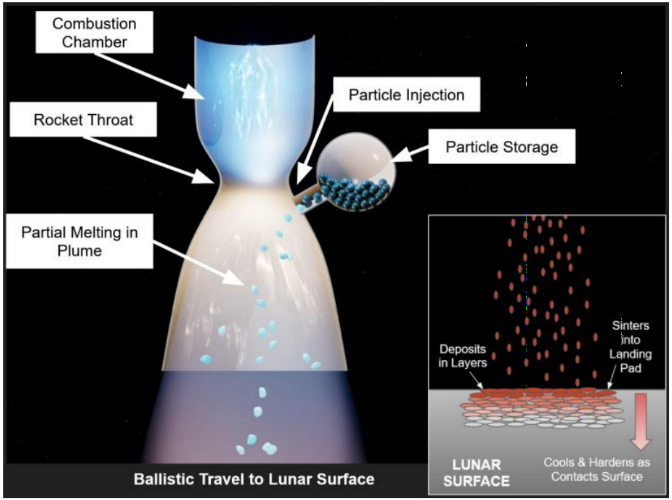Aerospace company Masten Space Systems has tested a NASA-backed technology to protect lunar landers from dangerous moon dust during both landing and takeoff.
The challenge: To slow their descent onto the moon, lunar landers fire their engines just before reaching its surface, which kicks up the mix of powdery dust and sharp rocks coating the moon.
Because space is a vacuum, the disruption caused by large landers — such as the ones designed for NASA’s Artemis mission — could send the moon dust and rocks flying at speeds faster than 6,700 mph, making them a threat to any nearby lunar assets and the lander itself.
It’s possible to mitigate the issue by choosing a landing spot carefully, but that limits exploration. Shielding on a lander can help, too, but it also adds weight to the craft, increasing mission cost.
Immobilizing moon dust: Masten’s lander-protecting technology is called the in-Flight Alumina Spray Technique (FAST), and it creates a solid landing pad below a lander just before it touches down on the surface of the moon.
Large landers could send moon dust and rocks flying at speeds faster than 6,700 mph.
Masten has just completed initial research into the tech, and the results so far are positive.
“Our analysis determined the FAST concept is feasible for building near-instant landing pads during a lunar descent, even when utilizing an Artemis-scale human lander,” the company announced.
How it works: The FAST system injects ceramic particles into the engine plume of a lander as it nears the surface of the moon. The plume partially melts the particles, and when they hit the surface, they coat the moon dust and solidify.

During the recently wrapped study, Masten used its own rockets to simulate moon landings and refine its tech, determining the ideal particle size, deposit rate, landing pad thickness, and more.
For NASA’s Artemis lander, for example, it recommends depositing a layer of larger alumina ceramic particles first, and then adding a layer of much smaller particles on top of that one.
The whole deposit and cooling process would take less than 13 seconds.
The next steps: The Artemis lander simulation required 410 pounds of particles, and it’s not clear how that (plus the weight of the container holding them) would compare to the weight of shielding needed to protect the craft from moon dust.
However, Masten says the FAST system would be cheaper than the estimated $120 million it would cost to send smaller spacecraft to the moon so that they could construct a pad for future landers (something other researchers are looking into).
The next step in the research, according to Masten, is to actually test the tech on the moon. After that, it could potentially be applied to landers destined for Mars or other places in space.
We’d love to hear from you! If you have a comment about this article or if you have a tip for a future Freethink story, please email us at [email protected].




